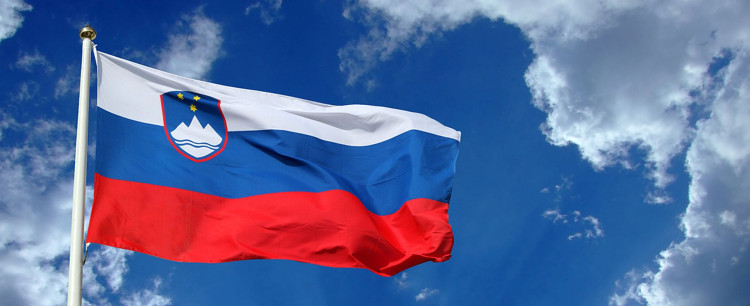An International Atomic Energy Agency (IAEA) mission found that Slovenia is continuously working to further strengthen its mature nuclear and radiation safety framework, including by holding emergency exercises with cyber security scenarios. The IAEA team also said that the Government should consider allotting sufficient funding and human resources to the regulators to guarantee their sustained independence and performance.
The Integrated Regulatory Review Service (IRRS) team today concluded an 11 day mission to assess the governmental, legal and regulatory framework for nuclear and radiation safety in Slovenia. The mission was requested by the Government of Slovenia. It was hosted by the Slovenian Nuclear Safety Administration (SNSA), the country’s nuclear regulatory authority, and the Slovenia Radiation Protection Authority (SRPA) which regulates radiation safety in medicine and veterinary practices.
Cantemir Ciurea, President of Romania’s nuclear safety regulator (CNCAN), led the 17 person team which included experts from Brazil, Finland, France, Hungary, Ireland, Lithuania, Malta, Pakistan, Slovakia, Sweden and Switzerland, as well as three IAEA staff. “SNSA and SRPA are well experienced regulators in nuclear and radiation safety and have demonstrated their commitment to continuous improvement,” he said.
Highlighting the country’s emergency exercises using cyber security scenarios as one example of where the country is leading in nuclear safety, Ciurea added that “such scenarios are at the interface between nuclear safety and security and being prepared for these emergencies demonstrates a mature framework for emergency response.”
The IRRS team determined that it was vital for the Slovenian Government to make appropriate provisions and improve allocated resources to ensure that the independence of SNSA and SRPA is sustained so that they can effectively fulfil their mandates.
IRRS missions are designed to strengthen the effectiveness of the national nuclear and radiation safety regulatory infrastructure, based on IAEA safety standards and international good practices, while recognizing the responsibility of each country to ensure nuclear and radiation safety.
The mission reviewed the regulatory framework for all civilian facilities and activities using nuclear material and radiation in Slovenia. The country has one nuclear power plant - the Krško Nuclear Power Plant (NPP) – which is co-owned by neighbouring Croatia and provides almost 40% of Slovenia’s electricity. Slovenia also has one research reactor, a radioactive waste facility and uses radiation in industry, research and education applications.
Alongside a series of interviews and discussions with the SNSA and SRPA, the IRRS team met with the Minister of Environment and Spatial Planning and the Minister of Health. The experts also observed safety inspections at the Krško NPP, the Jožef Stefan Research Institute, the Institute of Oncology Ljubljana and the Vrbina waste management facility throughout the mission.
Anna Hajduk Bradford, Director of the IAEA Nuclear Installation Safety Division, speaking at the exit meeting, complimented Slovenia for being among a small number of countries who have started the second cycle of IRRS missions. The country has hosted an initial IRRS mission in 2011 and a follow-up mission in 2014. “Slovenia has demonstrated a robust commitment to regulatory safety and a willingness to cooperate with the IAEA to ensure its safety framework meets with IAEA Safety Standards,” she said.
The review team’s report highlighted the positive steps Slovenia has taken to improve the nuclear regulatory framework, including:
- SNSA’s initiative to develop written instructions for licensees on how to participate in successful and effective remote inspections at an early stage of the pandemic.
- SNSA’s web portal which provides on-line dose rate monitoring results and nuclide specific results from environmental samples to the public.
- The establishment of a national protection strategy for nuclear and radiological emergencies, which was developed in line with IAEA emergency preparedness and response guidance.
The mission team made observations for how the government and the regulators can strengthen the regulatory framework for nuclear and radiation safety in Slovenia in the coming years, including by:
- Providing sufficient funding and human resources for both SNSA and SRPA to fulfil their responsibilities.
- Improving coordination between all relevant competent authorities responsible for nuclear and radiation safety and nuclear security.
- Developing guidance for licensees on the use of authorization request documents.
- Improving training of inspectors to cover principles, concepts and technological aspects of safety inspections and on procedures for inspecting facilities and activities.
- Developing communication strategies and plans to ensure the stakeholders are informed about their work.
“We are committed to implement all findings of the mission in the next few years to further improve our safety framework,” said Mr Igor Sirc, Director, SNSA. “This will strengthen nuclear and radiation safety in Slovenia and make the regulatory body more efficient and resilient to external influences” said Mr Damijan Škrk, Director, SRPA.
The mission will be followed by an IAEA Integrated Review Service for Radioactive Waste and Spent Fuel, Decommissioning and Remediation (ARTEMIS) mission – scheduled for 22 to 30 May 2022 – which will assess radioactive waste and spent fuel management, decommissioning and remediation programmes in the country.
The final IRRS mission report will be provided to the Government in about three months.
IAEA Safety Standards
The IAEA Safety Standards provide a robust framework of fundamental principles, requirements, and guidance to ensure safety. They reflect an international consensus and serve as a global reference for protecting people and the environment from the harmful effects of ionizing radiation.


